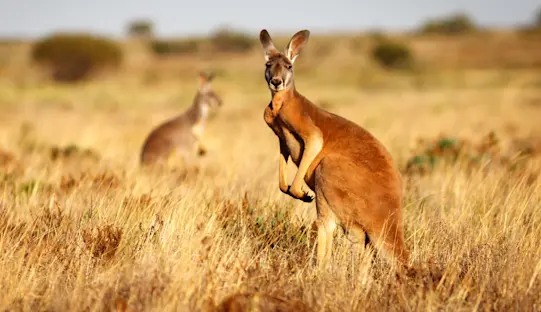
Know Before You Go


Coyote Facts | Southwest Canyons Wildlife Guide
Coyotes are native to North and Central America, although they are believed to have split off from the European gray wolf. They differ from the gray wolf in their vocalization patterns and pack structure, making them a species in their own right.
Although they were also targeted during the predator elimination campaigns in the 1800s and 1900s (and still are today), coyotes are more adaptable than wolves and were able to increase in number and fill the niches in the ecosystem that were left open by the disappearance of their larger cousins. Coyotes are even known to increase their breeding when they are being persecuted, having several litters per years instead of just one.
PHYSICAL CHARACTERISTICS
On average, coyotes weigh between 30 and 40 pounds, about one-half or one-third the weight of a wolf. Compared to the wolf, coyotes are dainty, with smaller heads, muzzles, legs
and
feet. Coyote’s coats vary in color, but the majority of adults have gray fur and a bushy black-tipped tail, with a white underbelly and reddish-brown hair on their snouts, legs and the backs of their ears.
BEHAVIOR AND COMMUNICATION
Coyotes are extremely smart and opportunistic creatures. Highly adaptable animals, coyotes are able to alter their diet, mating habits and social dynamics to better suit a change in their environment. While gray wolves specialize in hunting large, hoofed animals, coyotes are omnivores and will eat anything including insects, fruit, house cats, small dogs, livestock and even garbage when their preferred foods are unavailable.
Like wolves, coyotes maintain their territories by scent-marking their boundaries and trails with urine. They also use calls to communicate, announce their presence, and strengthen social bonds within the family unit. Coyotes can often be heard at night howling or emitting a series of short, high-pitched yips. Their scientific name, Canis latrans, means “barking dog” in Latin.
FEEDING
Coyotes survive on small prey such as rabbits, voles, mice
and
carrion for the majority of the year. However, in late winter when larger prey like deer and elk are weak, they turn their attention to these more ambitious hunts.
Coyotes have been known to hunt cooperatively with eagles and ravens who will lead them to potential prey. Ravens can’t get through the tough skin of a deer or elk carcass, so they need the help of coyotes to “open” it. Eagles, with their incredible vision, can locate the weak, isolated animals that make easy prey for coyotes.
BREEDING
At the start of the breeding season in January, several males may gather around a female to court her, but she will only choose one to mate with. A female is in estrus for three to five days a year, so mating activity is intense during this short window. A litter is typically four to nine pups, depending on food abundance. At twelve weeks of age, the pups begin to travel with adults and learn to hunt for themselves.
































